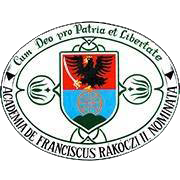Please use this identifier to cite or link to this item:
https://dspace.kmf.uz.ua/jspui/handle/123456789/1103| Title: | Translator’s linguistic personality |
| Other Titles: | Мовна особистість перекладача |
| Authors: | Tomash Vrabel Vrábely Tamás Врабель Томаш |
| Keywords: | мовна особистість;лінгвістичний підхід;комунікативний підхід;функціональний підхід;типологічний підхід;когнітивний підхід;модель перекладу |
| Issue Date: | 2020 |
| Publisher: | Видавничий дім «Гельветика» |
| Type: | dc.type.researchArticle |
| Citation: | Tomash Vrabel: Translator’s Linguistic Personality. In Науковий вісник Дрогобицького державного педагогічного університету імені Івана Франка. Серія: Філологічні науки (мовознавство). 2020. № 14. с. 21-25. |
| Series/Report no.: | Серія: Філологічні науки (мовознавство);№ 14. |
| Abstract: | Резюме. Стаття присвячена детальному аналізу мовної особистості перекладача. У наш час дослідники виділяють цілу низку способів представлення мовної особистості. Основною метою цього дослідження є загальний огляд лінгвістичного, комунікативного, функціонального, типологічного та когнітивного підходів до процесу перекладу із зосередженням особливої уваги на мовній особистості. У контексті такого огляду виокремлено одиниці перекладу та окреслено критерії оцінки якості перекладу.
З’ясовано, що прихильники різних підходів до процесу перекладу з опертям на відповідні засади випрацювали різні моделі перекладу. Зокрема, лінгвістичний підхід репрезентовано ситуативно-денотативною, трансформаційною, семантичною моделями та теорією рівнів еквівалентності; комунікативний – інтерпретативною теорією перекладу (її розробили французькі мовознавці Д. Селескович та М. Ледерер наприкінці ХХ століття); функціональний підхід представлено вісьмома функціями перекладу, серед яких – переклад як джерело натхнення, переклад як школа стилю, трансгресивний переклад, палліативний переклад, переклад як фактор формування культури, переклад-барометр, ідентифікуючий переклад та переклад як фактор перенесення літературних жанрів (їх виділив канадський дослідник Ж. Деліль); типологічну теорію перекладу
Л. M. Алєксєєвої зосереджено на екстралінгвальному описі перекладу, на поняттях смислу, рефлексії та діяльності; когнітивний підхід включає інтегративну модель концептуального перекладу, когнітивну модель процесу перекладу та когнітивно-евристичну модель перекладу.
Простежено, що процеси розуміння оригіналу та тексту перекладу складаються з декількох етапів. Текст має безмежну кількість інтерпретацій у процесі перекладу, а перекладач може неодноразово повертатись до останнього для його коригування й вдосконалення. Підсумовано, що будь-яка модель перекладу є гіпотетичною за своєю природою, оскільки немає безпосереднього доказу дотримання перекладачем моделі й невідхиляння від неї. Однак водночас зауважено, що відповідність перекладу результатові, очікуваному згідно з моделлю, вказує на те, що остання має певну пояснювальну силу. Abstract. The present article is devoted to the detailed analysis of the translator’s linguistic personality. Modem researchers single out a number of methods to present linguistic personality. The main purpose of this paper is to give a general overview of the linguistic, communicative, functional, typological, and cognitive approaches to the translation process with special regard to linguistic personality. In the light of this review, translation units are distinguished and translation quality assessment criteria are specified. It has been determined that adherents of various approaches to the process of translation, based on relevant principles, elaborated and analysed a number of translation models. The linguistic approach is represented by situational and denotative, transformation, semantic models, and the theory of equivalence levels; the communicative one includes the Interpretive Theory of Translation (elaborated by French linguists D. Seleskovitch and M. Lederer in the late 20th century); the functional approach embraces eight functions of translation covering translation as a source of inspiration, translation as a school of style, transgressive translation, palliative translation, translation as a culture-forming factor, barometer translation, identifying translation, and translation as a factor of transferring literary genres (they were elaborated and singled out by the Canadian researcher J. Delisle); L. M. Alekseyeva’s typological theory of translation concentrates on the extralinguistic description of translation, as well as on the notions of sense, reflection, and activity; the cognitive approach comprises the integrative model of conceptual translation, the cognitive model of the translation process, as well as the cognitive and heuristic model of translation. It has been observed that the processes of understanding the source text and creating the target text consist of multiple stages. A text can have an infinite number of interp-retations in the course of translation and the translator can come back to the latter multiple times to correct and improve it. The author has come to the conclusion that any translation model is hypothetical in character as far as there is no direct proof that the translator acts in full accord with the model and does not deviate from it. However, correspondence of the result of translation with the expected one according to the model shows that the latter has some explanatory power. |
| URI: | http://dspace.kmf.uz.ua:8080/jspui/handle/123456789/1103 |
| ISSN: | 2312-6353 |
| metadata.dc.rights.uri: | http://creativecommons.org/licenses/by-nc-nd/3.0/us/ |
| Appears in Collections: | Vrábely Tamás |
Files in This Item:
| File | Description | Size | Format | |
|---|---|---|---|---|
| Vrabely_T_Translators_linguistic_personality_2020.pdf | Tomash Vrabel: Translator’s Linguistic Personality. In Науковий вісник Дрогобицького державного педагогічного університету імені Івана Франка. Серія: Філологічні науки (мовознавство). 2020. № 14. с. 21-25. | 9.12 MB | Adobe PDF | View/Open |
This item is licensed under a Creative Commons License





